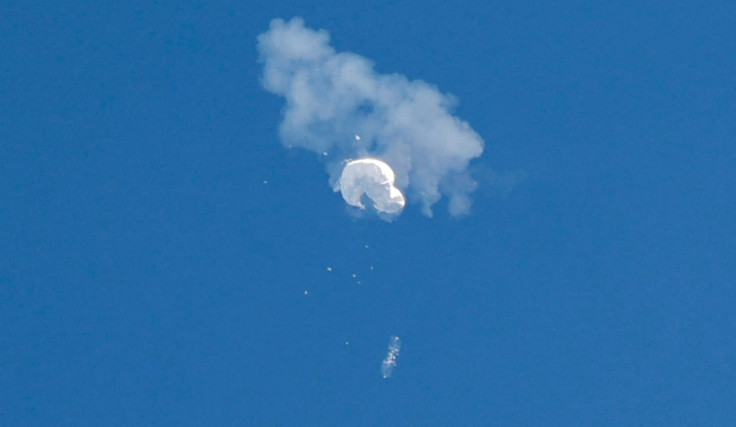What's Up There? Possible Explanations For Mystery Objects Downed By U.S

Weather balloons, civilian drones and other non-military aerial gadgets are all possible explanations for the mysterious objects the U.S. military has shot out of the sky in the past week, say scientists and atmospheric experts.
U.S. and Canadian officials have offered scant details about what exactly fighter jets shot down over Alaska, northwestern Canada, and Lake Huron over three days after an earlier downing of a suspected Chinese spy balloon off the coast of South Carolina.
One thing is clear, however: there are plenty of non-military items floating high in the atmosphere.
"Worldwide, there are hundreds, probably close to 1,000 balloons launched every day for meteorological observations for countries all over the world," said Raymond Shaw, an atmospheric physicist and professor at Michigan Technological University. "They're a nice way to make atmospheric measurements without spending a bunch of money."
The U.S. military and the Biden administration have acknowledged there is much they don't know about the most recent, unmanned objects, including how they stay aloft, who built them and whether they may have been collecting intelligence.
Military officials say that until they are able to recover the debris, they are unlikely to know for sure what the objects were.
On Tuesday, White House national security spokesperson John Kirby said that the U.S. intelligence community was considering the possibility that they could be aerial devices "tied to some commercial or benign purpose."
Balloons are one possible explanation.
Scientists use balloons to study wind patterns, air quality, and other aspects of Earth's atmosphere. They come in many sizes, from a few feet in diameter to the width of a tennis court. Some ascend on vertical missions to as high as 100,000 feet before popping, and many can travel hundreds of miles, usually dangling sensor payloads underneath by cords or strings.
Some high-altitude balloons used to study the stratosphere's wind speed and direction carry only a GPS tracking device, said Alemu Gonsamo, assistant professor at Canada's McMaster University who uses camera-equipped balloons to study vegetation on the ground.
STILL UNEXPLAINED
The object downed over Canada on Saturday was described by Canada's defense minister as resembling a balloon. But the two other objects may have been something else entirely.
For example, a U.S. official described the object shot over Lake Huron on Sunday as octagonal, with strings dangling from it.
"The Pentagon shooting an octagon? It couldn't be a balloon, because a balloon has a soft boundary by definition and therefore has to be smooth," said Alex Kostinski, a physicist at Michigan Tech University.
In Alaska, where one of the objects was shot down, scientists host field programs to deploy large balloons and rockets from warehouses and launchpads at the Poker Flat Research Range, said John Walsh, an Arctic climate researcher at the University of Alaska Fairbanks.
"But I don't think there's one of those field programs going on right now, so that wouldn't explain what got shot down in the last week or so," Walsh said.
Little is known about the object downed over Alaska on Friday, which a Pentagon spokesman described as the size of a small car and that it was struck by a missile some 40,000 feet above ground.
Some large consumer or commercial drones with propellers can be as big as a compact car and in rare cases can reach 40,000 feet, although the U.S. Federal Aviation Administration bars consumer drones from flying higher than 400 feet.
Research drones deployed in Arctic regions are sometimes preferred over satellites for having a closer, longer-term view of the effects of melting ice and sea-level rise, according to NASA, but those aircraft are limited to only a few hours in the air.
Drones were among the objects examined by a NASA study team that was formed last year to help the Pentagon understand unidentified aerial phenomena, said Thomas Zurbuchen, NASA's former science chief who oversaw the group before retiring in December.
Following the Chinese balloon incident the U.S. military has adjusted the filters it uses to examine radar data, allowing it to spot smaller, slower-moving objects. That will inevitably mean more sightings and possibly further shootdowns.
U.S. Senator Marco Rubio, leaving a classified briefing on the objects on Tuesday, told reporters that they are no different than the hundreds of benign objects cited in past intelligence reports.
"We've never shot down anything in over 65 years of NORAD, and in one week they shot down three things," he said.
© Copyright Thomson Reuters {{Year}}. All rights reserved.




















